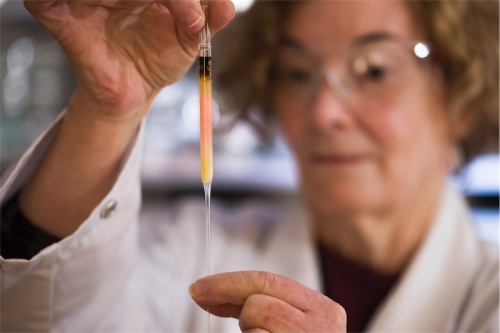
Dr Nur Gueneli, who discovered the molecules as part of her PhD studies, said the pigments taken from marine black shales of the Taoudeni Basin in Mauritania, West Africa, were more than half a billion years older than previous pigment discoveries.
“The bright pink pigments are the molecular fossils of chlorophyll that were produced by ancient photosynthetic organisms inhabiting an ancient ocean that has long since vanished,” said Dr Gueneli from the ANU Research School of Earth Sciences.
The ANU led study, with support from Geoscience Australia and researchers in the United States and Japan, found fossils ranging from blood red to deep purple in their concentrated form, and bright pink when diluted.
The researchers crushed the billion-year-old rocks to powder, before extracting and analysing molecules of ancient organisms from them.
“The precise analysis of the ancient pigments confirmed that tiny cyanobacteria dominated the base of the food chain in the oceans a billion years ago, which helps to explain why animals did not exist at the time,” Dr Gueneli said.
Senior lead researcher associate Prof Jochen Brocks from ANU said that the emergence of large, active organisms was likely to have been restrained by a limited supply of larger food particles, such as algae.
“Algae, although still microscopic, are a thousand times larger in volume than cyanobacteria, and are a much richer food source,” said Dr Brocks.
“The cyanobacterial oceans started to vanish about 650 million years ago, when algae began to rapidly spread to provide the burst of energy needed for the evolution of complex ecosystems, where large animals, including humans, could thrive on Earth.”
Who can be trusted?
In a world of spin and confusion, there’s never been a more important time to support independent journalism in Canberra.
If you trust our work online and want to enforce the power of independent voices, I invite you to make a small contribution.
Every dollar of support is invested back into our journalism to help keep citynews.com.au strong and free.
Thank you,
Ian Meikle, editor




Leave a Reply